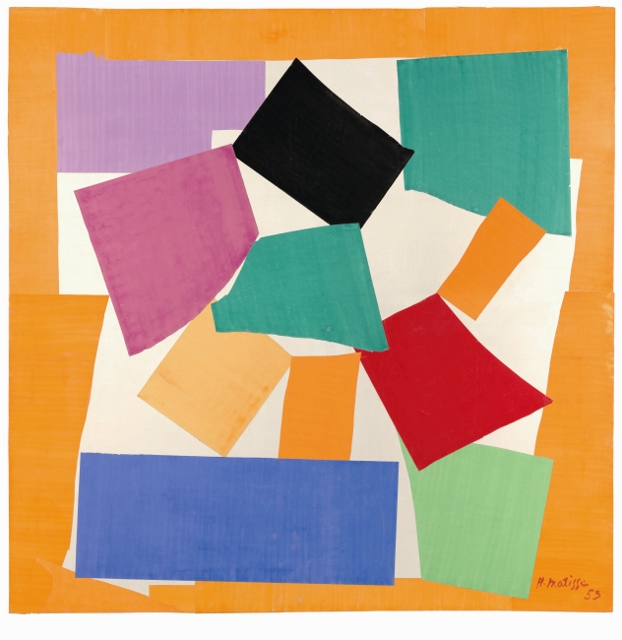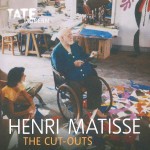Written by Graham Hooper
What I have always enjoyed most in Tate Modern has been the approach on the part of its curators to juxtapose works thematically, rather than art-historically, and in doing so create new meanings, exciting perspectives and fresh insights. The works on display often take on a clarity or assume a resonance that might otherwise remain hidden.
A good example of this is the opening room to the Transformed Visions wing on Level Three. Here we walk into a space bracketed by two very different depictions of the body. They face each other, with us in the middle. On the left Germaine Richier’s Shepherd of the Landes from 1951, to the right Thomas Hirschhorn’s Candelabra with Heads from 2006. Inexplicably gender neutral, part human-part mechanised both, and determinedly still or active. Distinct pieces but together they say something about the physicality of the humanity, they are concerned explicitly with what would have been called the machine in the early 50’s but is now referred to as technology, and they are both very much suggestive of the physicality or pressure engaged in action and conversely restriction. They are crafted but crafty, in ways genuinely provocative and cleverly amusing.
I doubt Tate Modern’s two major shows, one a retrospective of Richard Hamilton [now closed], famously the founding father of British Pop Art, and the other a survey of Matisse’s last body of work; 17 years’ worth of colourful and highly decorative paper cut-outs (with the well-known and much-loved Snail of 1953 at its centre) were intentionally timed to coincide with any artistic meaning.
But the Hamilton show, chronologically begins within a month of the last works by the great French master, and the coincidences do not stop there.
Most strangely perhaps the front of both the gallery guides exhibit striking similarities. Matisse is seen, photographed in his wood and wicker wheelchair, scissors in hand, barefoot and in his pyjamas, surrounded by his paper off-cuts in the softly lit studio space that was his Nice hotel residency. He is being watched by his young, attractive assistant of the time with a tender, loving stare.
The Hamilton guide meanwhile depicts a detail from his 1964 Interior II. Here the space, anonymous and bland, white and modern, is also occupied by a chair and woman but this time the chair is a 1960’s swivel chair, and the figure is the actress Patricia Knight, playing the murderess in the 1949 Film Noir Shockproof. The chair is empty and still, and only capable of rotary movement in any case, as opposed to Matisse’s forward and backward transport. The woman, a black and white film still, is broody and menacing, she stares off frame and behind us into the distance.
The thematic interplay between these two giants of modern art are fascinating, and come to light much more vividly and eloquently when experienced as companion pieces. For instance, the two shows have much to say about gender relations. We do not forget that both these artists are men. It would be idiotic and over-simplistic to say that Matisse’s cut-outs display a feminine delicacy as much as would be to suggest that Hamilton is overtly masculine in his use of scientific grids and mathematical diagrams.
In fact Matisse, the patriarch, is clearly revered and doted on by his female assistants who by all accounts fulfilled the menial, labour-intensive burden of painting and pinning up gouached paper for his approval. Elsewhere the women are nudes, dancers or swimmers, there for his enjoyment in all their curvaceous or delicate physicality.
The women in Hamilton’s work appear sparingly, as Margaret Thatcher (Treatment Room, 1984) shown on a screen overlooking a slab table in a nightmarish quasi-DHSS/NHS styled waiting area, from a Conservative Party Broadcast, or as ‘pure spirits, without substance’ in the 2007 series A Host of Angels.
Matisse and Hamilton were deeply concerned with technology too, in their own very different ways.
The cut-outs are only possible as a direct result of Matisse’s adoption of scissors in place of a brush as a creative tool, and as such the act of scissor cutting is absolutely central to the body of work. Scissors are perhaps almost as simple and manual as a machine tool can be.
Hamilton on the other hand saw, from the 1950’s onwards, the role technology would come to play in modern living and artistic activity. Throughout we see televisions, tape-recorders, jukeboxes and microphones. In time the use of computers became a necessity when designing his increasingly complex paintings, with sophisticated adjusted perspectives.
The two men were also obsessed, it is fair to say, with motion – its distance, speed and direction. Matisse’s cut-outs are full of birds, fish and dancers. For him all symbols of freedom, something in his later years, we are told, he was very much deprived of as he grew increasingly frail. That said, his ability to balance on a chair, on a tower of blocks with an 8-foot bamboo cane to draw with is frankly impressive. His wheelchair would have afforded him movement primarily forwards and backwards only, and with no great speed, and that is mirrored metaphorically in this show.
There is a sense of ‘back-and-forthness’, and at a slow pace too, considering this is seventeen years of work. The Hamilton show suffers equally from its cyclical, spinning round-and-roundness, albeit faster than with Matisse. The same ideas are reworked, and over more than half a century. But littered throughout the extensive Hamilton survey are also more literal references to movement. Some of the earliest work on show is of sea creatures, echoing Matisse quite explicitly, and then space rockets, a little later trains are a focus of attention, and then later still car wheel design provide a line of visual enquiry (bizarrely). Interestingly a re-creation of his 1955 installation, Man, Machine and Motion (depicting, through nearly 200 photographic reproductions, ‘vehicles and equipment that extend the powers of the human body, enabling aquatic, terrestrial, aerial and interplanetary movement’) has been on show at London’s ICA.
So, Tate Modern has done once again what it does best, though by chance on this occasion perhaps, and brought together by way of comparison the historical and the recent, the very British and the distinctly European, around a selection of considered thematic focal points. This time we are invited to consider our relationship to gender, the machine as technology and movement, in both its literal and allegorical sense, and as a result our relationship to ourselves, our world and art.
Graham Hooper is an artist, writer and teacher, living and working in the south of England.
Henri Matisse: The Cut-Outs is at Tate Modern until 7 September 2014 (entry is £18 for adults without concessions), Richard Hamilton ran from 13 February – 26 May 2014.
Henri Matisse, The Snail 1953. Gouache on paper, cut and pasted on paper mounted to canvas Tate © Succession Henri Matisse/DACS 2013
Richard Hamilton, Just what was it that made yesterday’s homes so different, so appealing? 1992. Tate © Richard Hamilton 2005. All rights reserved, DACS





